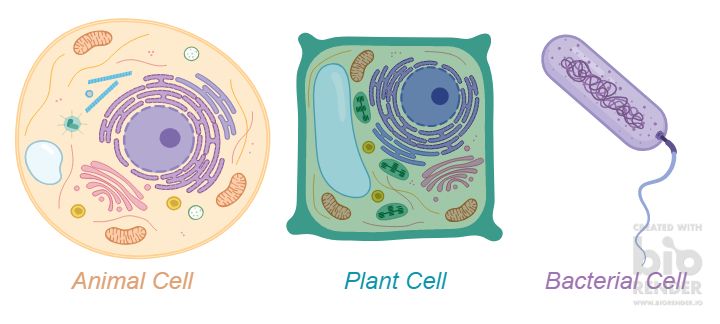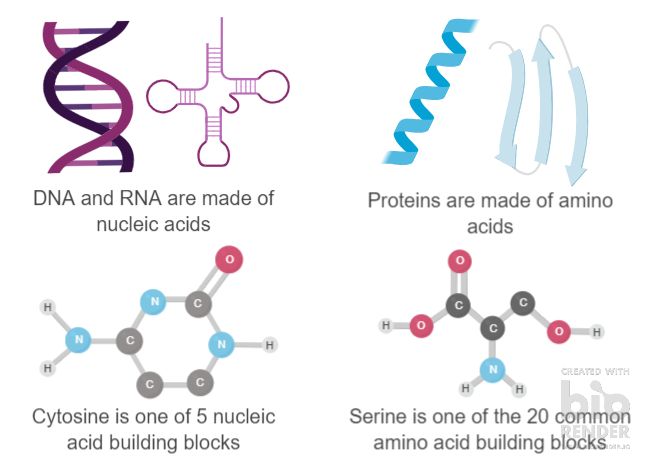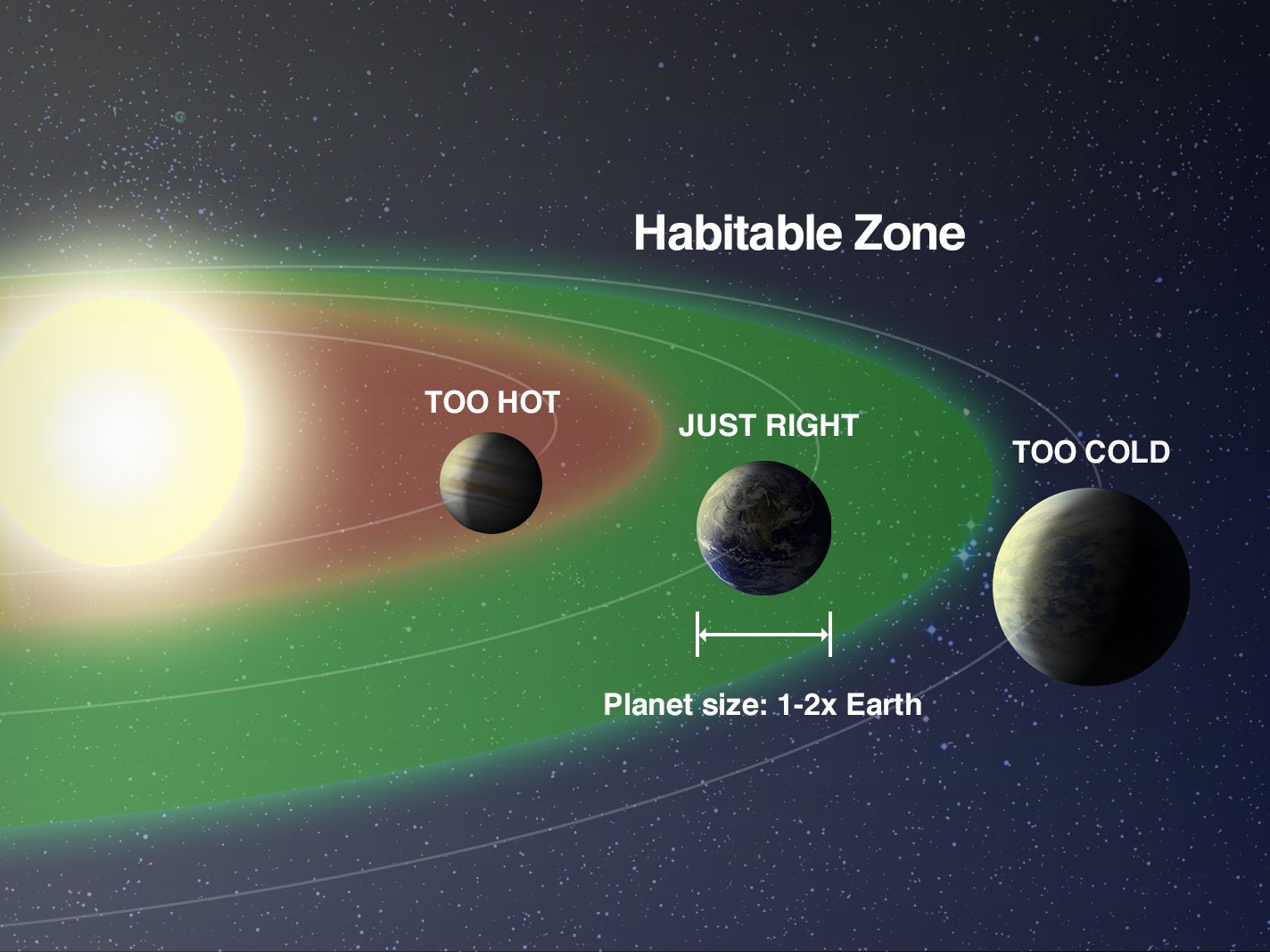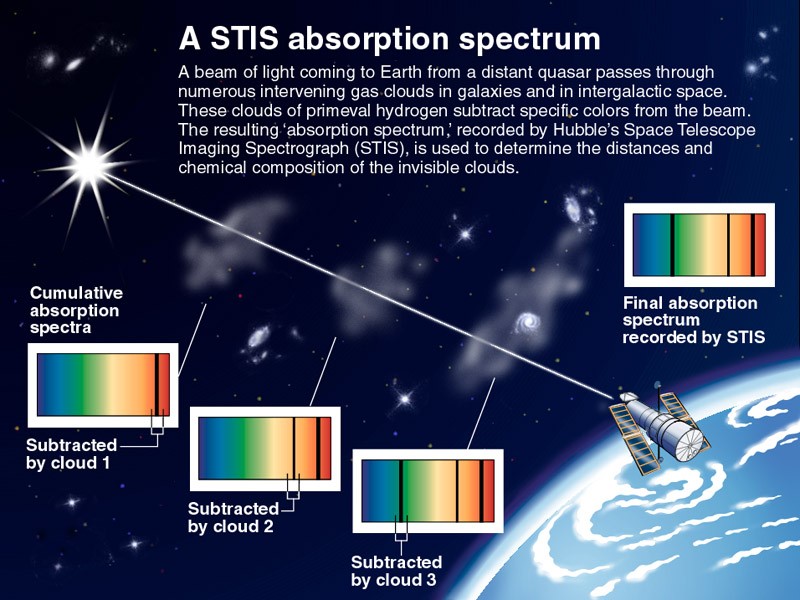By Sam Stadmiller
Have you ever wondered if aliens are real? Well, scientists do too, and they spend lots of time and effort searching for life on other planets. When you think about the vastness of our universe, the existence of life on other planets in the past, present, or future, is statistically probable. All that remains is to find the evidence.
But before we start looking for signs of life on other planets, it is important to understand what life on Earth looks like. Although most of us can easily identify a living thing from a non-living thing, some scientists caution against making such specific definitions of the word life. All living organisms, however, can be characterized by a common set of properties. Here are three of those properties below.
1. Organization. Living things on Earth are organized into specialized compartments, or cells. All living things are therefore made up of at least one cell.

Living organisms must contain at least one cell. Here are three different cell types. Animal and plant cells make up multicellular eukaryotes and bacteria are single-celled prokaryotes. Image created with biorender.
- Reproduction. Living organisms must be able to reproduce, either sexually or asexually, to create new organisms.
- Metabolism. Metabolism is just a fancy way of saying ‘all of the biochemical reactions that occur in a living thing to sustain life.’ One example of metabolism is the conversion of food we eat into energy for the body to use.

Biological macromolecules are made up of multiple smaller building blocks and these building blocks are organic compounds. DNA and RNA are made up of nucleic acid building blocks and proteins are made up of amino acid building blocks. Image created with biorender.
To meet all these requirements for life, living things must contain molecules that help them carry out these functions. These molecules are called biological macromolecules, which include DNA, RNA, proteins, carbohydrates, and lipids, and are made up of organic compounds.
So when it comes to the search for life in the universe, scientists, more specifically astrobiologists, search for organic molecules in space. Although it’s unlikely that we will find Earth’s amino acids and nucleic acids in space, scientists look for similar compounds that are carbon-based. Finding these molecules are clues that life had existed, or can exist, elsewhere in the universe.
So where do scientists look for these molecules? We have started to explore our solar system to find any evidence of life. In June 2018, the Curiosity rover found complex organic compounds in mudstone rocks on Mars. Also, many of Jupiter’s moons like Europa, have water, the most essential compound to life as we know it on Earth. But perhaps more exciting, is the search for life on exoplanets.

Earth exists in the habitable zone around our sun. Scientists are looking for signs of life on exoplanets that are within habitable zones of their respective stars. Planets in this zone are just the right temperature for water to be in its liquid form.
Exoplanets are planets that are outside of our solar system, meaning they don’t orbit around our sun. Instead, exoplanets orbit some other star in the universe. Over the past decade, thousands of exoplanets have been discovered and among these, scientists are looking for those within habitable zones of stars. Although there are multiple ways to find planets, the method that has found the most exoplanets is called transit photometry. This method makes use of many of the telescopes we have here on Earth and NASA’s Kepler Space Telescope to look at the dimming of a star’s light as a planet moves in front of that star.
So once these exoplanets are discovered, how do scientists search for organic compounds? Although we all wish that interstellar space travel were a reality, sadly it is not. Scientists, therefore, cannot collect samples from exoplanets that are at a minimum 4.2 light years away. This would take 81,000 years to get to with current technology! To get an idea of the chemical composition of far away places, scientists turn to spectroscopy.
Spectroscopy looks at how electromagnetic radiation, or light in the case of exoplanet exploration, interacts with matter. When light from a star passes through the atmosphere of a distant planet, it is possible to analyze the spectroscopy data to identify which elements are contained in that atmosphere. We have used spectroscopy to explore much of our solar system and distant bright stars, but spectroscopy of exoplanets that are light years away and not so bright is quite a challenge. Scientists have found water and organic compounds on some exoplanets using spectroscopy, but there are thousands more still to be explored. NASA is developing more advanced technologies for exoplanet exploration in the future like the James Webb Space Telescope and FINESSE.
So what do you think? Is it possible for life to exist elsewhere in the universe?
Peer edited by Rachel Battaglia and Mike Pablo

